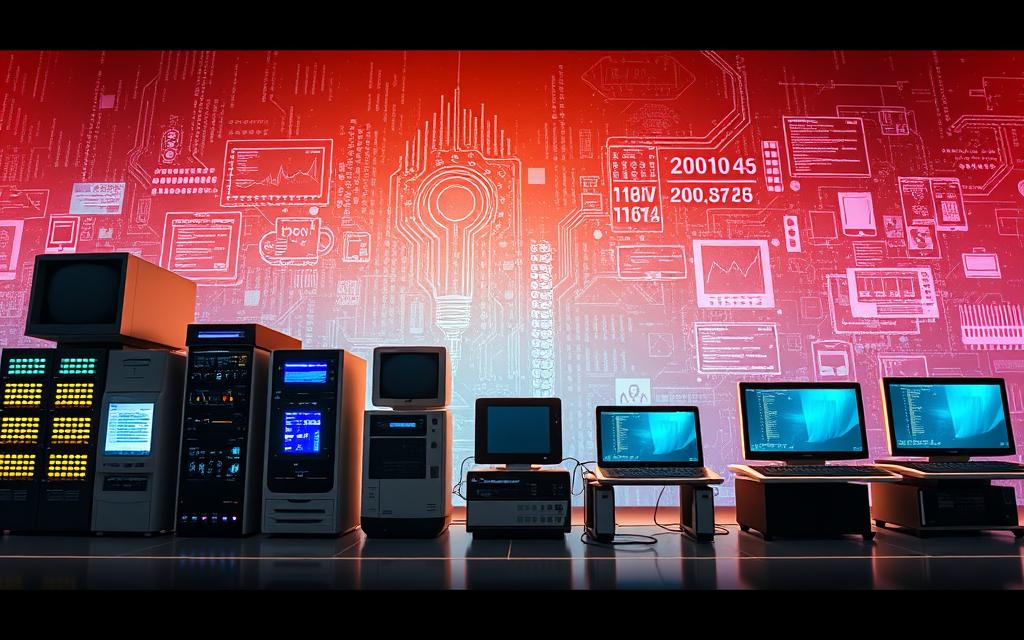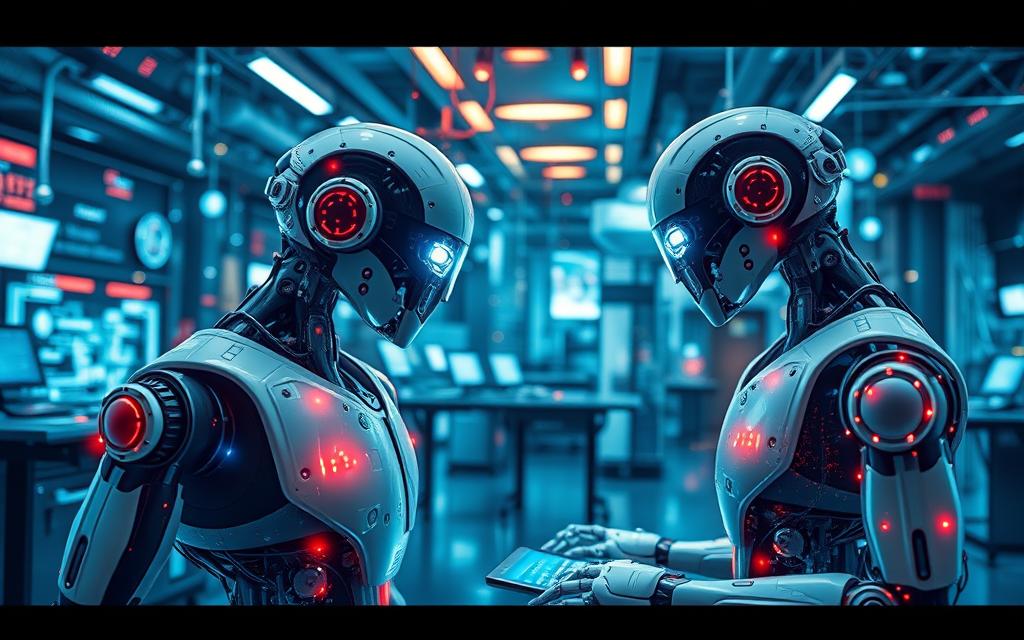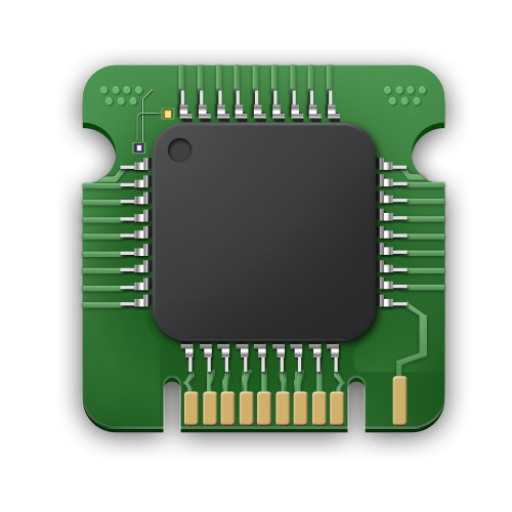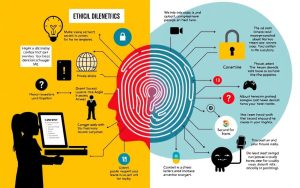In today’s digital world, information technology plays a vital role in both business operations and personal use. It encompasses a broad field that includes computer systems, software, programming, and data processing.
Information technology enables efficient communication, data management, and diverse technology applications. As our society becomes increasingly dependent on technology, understanding information and its management is crucial.
This article will provide a comprehensive overview of information technology’s definition, components, types, importance, and career opportunities, highlighting its significance in managing information effectively.
What is Information Technology?
Information technology is a broad term that encompasses a wide range of technologies used to manage and process information. It involves the use of computer systems and digital tools to access, manage, and process data, combining technology and data to support business operations and personal tasks.
The Definition of IT
Information technology (IT) refers to the use of computers, software, and other digital technologies to manage, process, and store various types of data. IT encompasses a broad range of services, including building communications networks, safeguarding data, creating and administering databases, and troubleshooting computer problems. The software and hardware components of IT work together to support business operations and enable efficient data management.
| IT Component | Description |
|---|---|
| Hardware | Physical components of IT, such as computers and servers |
| Software | Programs and operating systems that manage data and support business operations |
| Networking | Communications infrastructure that enables data exchange and connectivity |
Historical Development of IT
The phrase “information technology” was first coined in a 1958 article published in the Harvard Business Review (HBR). Authors Harold J. Leavitt and Thomas L. Whisler defined several types of IT, including techniques for fast processing of information, the use of statistical and mathematical models for decision-making, and the “simulation of higher-order thinking through computer programs.” Since then, IT has evolved significantly, transforming from early computing concepts at MIT and Harvard to become an integral part of every aspect of modern life.
The historical development of IT has been marked by significant milestones, including the advent of the internet, the development of personal computers, and the emergence of cloud computing. Today, IT plays a vital role in driving innovation and efficiency in businesses, and its impact is felt across various sectors.
The Evolution of Information Technology
The history of information technology is a story of continuous innovation, from ancient computational devices to modern computer systems. This evolution has transformed the way we live, work, and communicate.
From Early Computing to Modern Systems
The development of information technology has been marked by four distinct phases: pre-mechanical, mechanical, electromechanical, and electronic. The pre-mechanical phase began around 3000 BC with devices like the Antikythera mechanism. The mechanical phase saw the introduction of calculating machines in the 15th century. The electromechanical phase brought about more sophisticated computing devices in the 19th century, paving the way for the electronic phase, which started in the 1940s with the development of the first electronic computers.

Key Milestones in IT Development
Pivotal breakthroughs in technology have driven the development of computers and modern information systems. The first programmable computer, the Zuse Z3, and the first electronic digital computer, Colossus, were significant milestones. The Manchester Baby, the first stored-program computer, ran its first program on June 21, 1948. Advances in semiconductor technology, including the integrated circuit and microprocessor, led to the development of personal computers and modern computer systems in the field of IT.
Core Components of Information Technology
To understand IT, it’s essential to examine its fundamental components: hardware, software, and communication networks. These elements work together to create functional IT systems that process, store, and transmit data across organizations.
Hardware Elements
The physical infrastructure of IT systems is formed by hardware components, including computers, servers, storage devices, and peripheral equipment. These elements are crucial for the operation of IT systems, providing the necessary processing power, storage capacity, and connectivity.
Software Systems
Software systems are the backbone of IT, enabling the efficient operation of hardware. They include operating systems, application software, database management systems, and development tools. These software components are vital for managing and utilizing the hardware effectively.
Networks and Communication
Networks and communication technologies facilitate data transmission between devices. This includes Local Area Networks (LANs), Wide Area Networks (WANs), internet protocols, and wireless technologies. These networks enable seamless communication and data exchange, both within and between organizations.
The integration of hardware, software, and networks is critical for creating efficient and effective IT ecosystems. By understanding these core components, organizations can better leverage their IT resources to achieve their goals.
- Hardware components provide the physical infrastructure necessary for IT operations.
- Software systems enable the management and utilization of hardware.
- Networks and communication technologies facilitate data transmission and exchange.
Types of Information Technology
The diverse field of Information Technology includes several key areas that are vital for organizational success. These areas are crucial in driving business efficiency, innovation, and competitiveness.
Data Analytics and Processing
Data analytics and processing technologies help organizations interpret extensive business-generated data to identify trends and support better decision-making. These technologies enable businesses to gain valuable insights from their data, improving operational efficiency and strategic planning.
Cloud Computing
Cloud computing is a model for delivering services over the Internet, providing access to servers, databases, and analytics without requiring on-premises infrastructure. This technology offers scalability, flexibility, and cost savings, making it a popular choice for businesses.

Cybersecurity
Cybersecurity is the practice of defending IT infrastructure from threats, using tools like anti-spyware, firewalls, and antivirus software to protect data and systems. Effective cybersecurity measures are essential for safeguarding sensitive information and maintaining business continuity.

Automation and AI
Automation and AI technologies replace repetitive processes with intelligent systems, reducing manual tasks and improving operational efficiency. These technologies enable businesses to streamline their operations, enhance productivity, and drive innovation.

By integrating these different types of Information Technology, organizations can create comprehensive solutions for modern business challenges, driving growth and competitiveness in the process.
Essential IT Services and Functions
In today’s digital landscape, IT services play a crucial role in supporting business operations and driving innovation. These services are designed to manage and maintain the IT infrastructure, ensuring that it is secure, efficient, and aligned with the organization’s goals.
Data Management and Storage
Data management and storage services handle the complete lifecycle of information, from collection and storage to processing, retrieval, and backup systems. Effective data management is critical for organizations to make informed decisions, improve operational efficiency, and reduce risks. These services ensure that data is accurate, accessible, and secure.
Network Services
Network services design, implement, and maintain infrastructure including wired and wireless networks, routers, switches, and firewalls to ensure secure data transmission. These services are vital for enabling communication and collaboration within and outside the organization. By ensuring network reliability and security, organizations can protect their data and maintain business continuity.
Technical Support and Help Desk
Technical support and help desk functions assist users with troubleshooting problems and provide guidance on effectively using hardware and software. These services are essential for minimizing downtime and ensuring that users can work efficiently. By providing timely and effective support, organizations can improve user satisfaction and productivity.
IT services have evolved from basic maintenance to strategic business enablers that support organizational goals and innovation. The increasing importance of proactive IT service management in preventing issues rather than just responding to problems is a key trend. By adopting proactive IT service management, organizations can reduce risks, improve efficiency, and drive business success.

- Data Management: Ensuring data accuracy, accessibility, and security throughout its lifecycle.
- Network Services: Designing and maintaining network infrastructure for secure data transmission.
- Technical Support: Providing timely and effective assistance to users to minimize downtime and improve productivity.
The Importance of Information Technology in Modern Society
The impact of Information Technology on modern society is multifaceted, influencing business operations, communication, and innovation. IT has become an integral part of daily life, transforming the way individuals and organizations function.
Business Applications and Benefits
Information Technology has become essential for businesses, enhancing efficiency and productivity. By streamlining processes and enabling data-driven decision-making, IT helps organizations perform tasks faster and with fewer errors.
Impact on Communication and Connectivity
IT has revolutionized communication through the Internet, smart devices, and social media, making information transfer instantaneous. This has enabled global connectivity, facilitating collaboration and improving work-life balance through remote work technologies.
Role in Innovation and Development
The role of IT in driving innovation and development across industries is critical. By enabling new business models and creating opportunities for growth, IT plays a vital part in shaping the future of various sectors.
| Aspect | Impact of IT |
|---|---|
| Business Operations | Enhanced efficiency and productivity |
| Communication | Instantaneous information transfer |
| Innovation | Enabled new business models and growth |

In conclusion, the importance of Information Technologies in modern society is undeniable. As we continue to navigate the complexities of the digital age, understanding the role of IT in enhancing efficiency and communication is crucial for businesses and individuals alike.
Information Technology Careers and Education
With the increasing reliance on technology, IT careers are becoming more crucial than ever. The field offers a wide range of opportunities, from network architecture to cybersecurity, with competitive salaries and strong job growth projections.
Popular IT Career Paths
IT careers include various roles such as Computer Network Architect, with a median pay of $129,840 in 2023, Computer Systems Analyst ($103,800), Computer Support Specialist ($60,810), Database Administrator ($117,450), and Information Security Analyst ($120,360, with 32% growth expected by 2032).
These roles involve designing, implementing, and managing IT systems, ensuring their security and efficiency. For instance, learning about emerging technologies can enhance career prospects in this field.
Educational Requirements and Degrees
To pursue a career in IT, one typically needs to acquire relevant educational qualifications. Associate and bachelor’s degrees in IT or related fields are common starting points. Moreover, master’s programs and professional certifications can significantly enhance career prospects by providing advanced knowledge and skills.
Skills Needed for IT Professionals
IT professionals require a mix of technical and soft skills. Technically, they need skills in programming languages, network management, database administration, and cybersecurity practices. Soft skills such as communication, problem-solving, teamwork, and adaptability are equally important for success in IT roles.
The IT field is expected to experience strong job growth, particularly in areas like cybersecurity, cloud computing, and data science. As technology continues to evolve, the demand for skilled IT professionals will only increase, making it a promising career path for those interested in technology and innovation.
The Future of Information Technology
The future of information technology is poised to revolutionize industries through innovative developments. As technology continues to advance, new trends and challenges are emerging that will shape the IT industry.
Emerging Trends in IT
The IT landscape is witnessing significant changes with the advent of edge computing, quantum computing, and extended reality (XR). These technologies, along with the continued evolution of artificial intelligence and machine learning, are transforming the way businesses operate. The growing importance of cloud technologies is also evident, as they revolutionize business models, application development, and IT infrastructure management.

Challenges and Opportunities
Despite the promising trends, the IT industry faces several challenges, including cybersecurity threats, privacy concerns, and skills gaps. However, these challenges also present opportunities for growth and development. Areas like smart cities, Internet of Things (IoT), and blockchain applications are ripe for innovation. The development of new technologies will create demand for specialized IT skills, leading to new career paths.
| Trend | Description | Impact |
|---|---|---|
| Edge Computing | Processing data closer to the source | Reduced latency, improved real-time processing |
| Quantum Computing | Using quantum-mechanical phenomena for computation | Enhanced computational power, solving complex problems |
| Extended Reality (XR) | Inclusive term for AR, VR, and MR technologies | Immersive experiences, enhanced training and education |
Information Technology Ethics and Security
The rapid evolution of information technology has brought numerous ethical and security concerns to the forefront. As we increasingly rely on IT systems for various aspects of our lives, it’s crucial to address these challenges comprehensively.
Ethical Considerations in IT
Ethical issues in IT encompass a broad range of concerns, including privacy, data ownership, and the societal impacts of automation. For instance, the unauthorized downloading of copyrighted materials and employer monitoring of employees raise significant ethical questions. Key considerations include:
- Examining privacy concerns and data protection
- Addressing algorithmic bias and digital divide issues
- Understanding the societal impacts of automation
These ethical considerations require a balanced approach to ensure that the benefits of IT are realized while minimizing its negative consequences.
Security Challenges and Solutions
IT security is vital for safeguarding computer systems, networks, and databases from cyberattacks. Major security challenges include ransomware, phishing attacks, and insider threats. To address these challenges, organizations can implement comprehensive security solutions such as:
- Encryption and multi-factor authentication
- Intrusion detection systems and security awareness training
- Regular updates and patches for vulnerabilities

Ensuring the security of IT systems is crucial for protecting sensitive data and maintaining the integrity of organizational operations.
Conclusion
Information technology stands as a cornerstone of modern society, driving innovation and connectivity. The field of IT encompasses a broad spectrum of technologies, including hardware, software, networks, and data management, making it a comprehensive and dynamic field.
As IT continues to evolve, it opens up abundant career opportunities across various industries and specializations, making it an attractive career path for many. The importance of information technology in business operations, personal communication, and innovation cannot be overstated, highlighting the need for continuous learning to stay current with evolving tools and practices.
With numerous information systems and technology applications available, individuals can explore specific areas that align with their interests and strengths. As the information and technology landscape continues to expand, it presents new opportunities for growth and development. Embracing learning and staying adaptable are key to thriving in this ever-changing technology environment.







